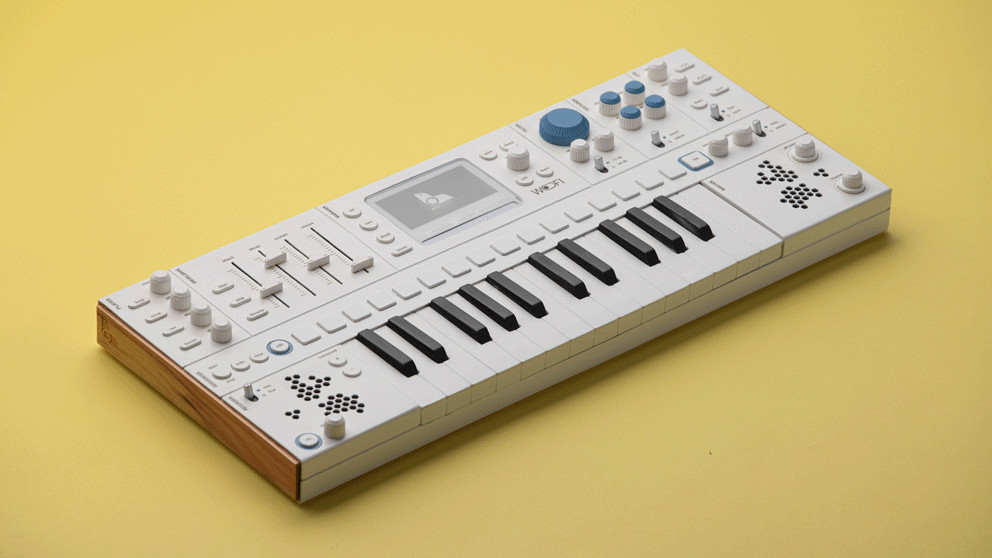Kiviak Instruments is drip-feeding us information on its WoFi sampling keyboard
When will we get the full reveal, though?

French start-up Kiviak Instrumemts has been setting social media tongues wagging recently with its teases of WoFi, a new and potentially interesting sampling keyboard, and more details are gradually starting to emerge.
WoFi will enable you to sample sounds via both a built-in mic and line input, then play them back using a variety of classic sampler emulations and other modes. Sounds can be sculpted using the filter, assignable envelope and LFO, and there’s also the mysterious “texturer” - some kind of granular processor, we believe - that promises to “elevate” your sound.
It looks like there’s a sequencer, too, accessible via the buttons above the keyboard, while the built-in speaker makes this a totally self-contained little instrument.
Connectivity options are set to include stereo audio, MIDI, USB, CV, Gate and Clock, while the name suggests a degree of wireless support, too. We’re told that you’ll be able to share patches via the mywo.fi cloud and also the intriguing ‘cartridge’.
This is the second sampling keyboard we’ve had the pleasure of telling you about in as many days - yesterday’s offering was the Chompi, a seemingly intuitive, kid-friendly device inspired by the likes of the Casio SK-1.
You can find out more about the WoFi in a lengthy chat that one of its developers had with SequencerTalk. We’re still waiting for full details, a price and release date to land on the Kiviak Instruments website, though.
Get the MusicRadar Newsletter
Want all the hottest music and gear news, reviews, deals, features and more, direct to your inbox? Sign up here.



I’m the Deputy Editor of MusicRadar, having worked on the site since its launch in 2007. I previously spent eight years working on our sister magazine, Computer Music. I’ve been playing the piano, gigging in bands and failing to finish tracks at home for more than 30 years, 24 of which I’ve also spent writing about music and the ever-changing technology used to make it.
MusicRadar deals of the week: I'm feeling this! Score an impressive £350 off the Fender DeLonge Starcaster, as well as hundreds off Epiphone, Gretsch, Gibson and more
We didn't think we needed a compact 4-octave acoustic piano that can also work as a MIDI keyboard, but the super-cute Keybird L1 might have convinced us otherwise









